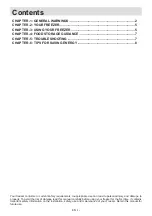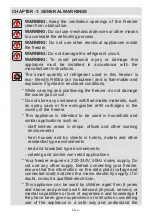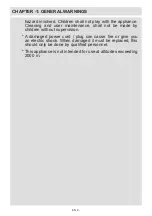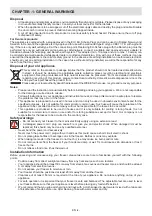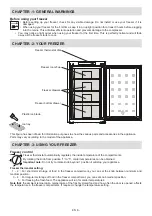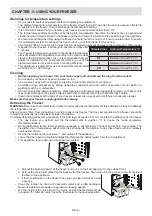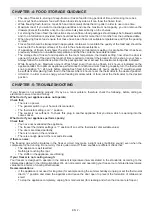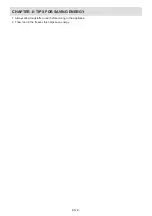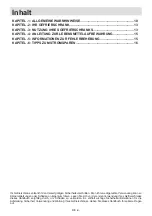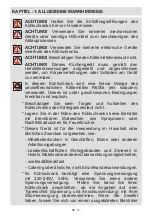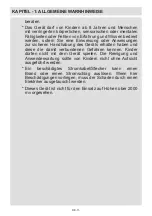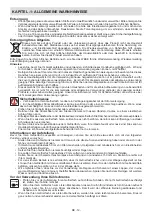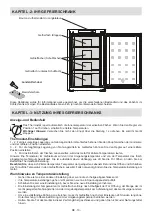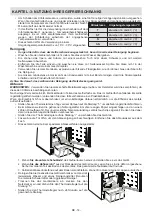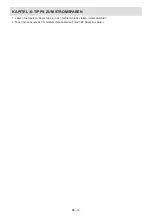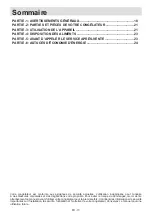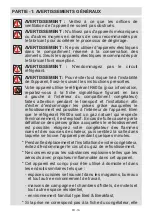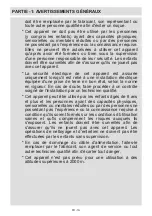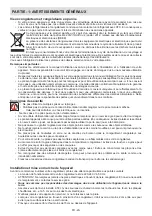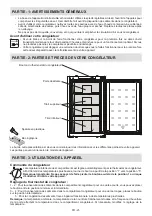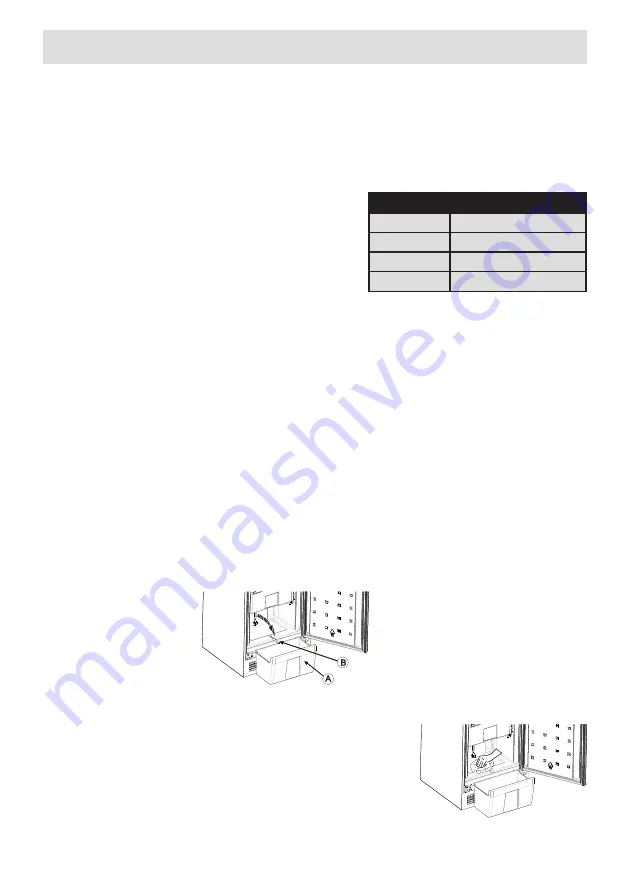
EN -6-
CHAPTER -3: USING YOUR FREEZER
Warnings for temperature settings
•
Do not pass to another adjustment before completing an adjustment.
•
The ambient temperature, temperature of the freshly stored food and how often the door is opened, affects the
temperature in the freezer. If required,change the temperature setting.
•
It is not recommended that you operate your freezer in environments colder than 10°C .
•
The temperature setting should be set by taking into consideration how often the freezer door is opened and
closed, how much food is stored in the freezer and the environment in which and the positioning of the appliance.
• We recommend that when first using the freezer it should be left running for 24 hours uninterrupted to ensure
it is completely cooled. Do not open the freezer door, or put food inside for this period.
•
Your freezer has a 5 minute built in delay function, designed to prevent damage to the compressor. When power
is applied to your freezer, it will begin to operate normally after
5 minutes.
•
Your freezer is designed to operate in the ambient temperature
intervals stated in the standards, according to the climate class
stated in the information label. It is not recommended that your
freezer is operated in the environments which are out of the
stated temperature intervals in terms of cooling efficiency.
•
This appliance is designed for use at an ambient tem-perature
within the 16°C - 38°C range.
Climate Class Ambient Temperature
o
C
T
Between 16 and 43 (°C)
ST
Between 16 and 38 (°C)
N
Between 16 and 32 (°C)
SN
Between 10 and 32 (°C)
Cleaning
• Before cleaning your freezer, turn your mains supply off and remove the plug from the socket.
•
Do not wash your freezer by pouring water on to it.
•
Use a warm, soapy cloth or sponge to wipe the interior and exterior of your freezer.
•
Carefully remove all baskets by sliding upwards or outwards and clean with soapy water. Do not wash in a
washing machine or dishwasher.
•
Do not use solvents, abrasive cleaners, glass cleaners or all purpose cleaning agents to clean your freezer. This
may cause damage to the plastic surfaces and other components with the chemicals they contain.
•
Clean the condenser at the back of your freezer at least once a year with a soft brush or vacuum cleaner.
Make sure that your freezer is unplugged while cleaning.
Defrosting the Freezer
WARNING:
Never use sharp metal tools, unless recommended by manufacturer, for this operation as they can damage
the refrigeration circuit.
After a period of time, frost will build up in certain areas in the freezer. The frost, accumulated in the freezer, should be
removed periodically (use the plastic scraper if available).
Complete defrosting will become necessary if the frost layer exceeds 3-5 mm to maintain the efficiency of the freezer.
•
The day before you defrost, set the thermostat dial to position “5” to freeze the foods completely.
(Recommendation)
•
During defrosting, frozen foods should be wrapped in several layers of paper and kept in a cool place. The
inevitable rise in temperature will shorten their storage life. Remember to use these foods within a relatively
short period of time.
• Set the thermostat knob to position “•” and switch off the appliance.
•
Leave the door open to accelerate defrosting. Remove the defrost water from the compartment.
•
This appliance is provided with a special drain system.
1. Pull out the bottom drawer
A
of the freezer and put it on the floor aligning it to the cabinet front.
2. Pull out the drain pipe
B
placed on the back wall of the freezer. Then place it in the groove on the front side of
the floor of the appliance.
3.
If there Is still water on the freezer floor, you can clear it away by using
a sponge.
•
Clean the interior by hand with lukewarm water and a little detergent.
Never use abrasive products or aggressive cleaning agents.
•
Dry the inside of the unit, plug on the mains, and set the thermostat knob
to position “5”. After 24 hours, reset the thermostat to the desired position.


